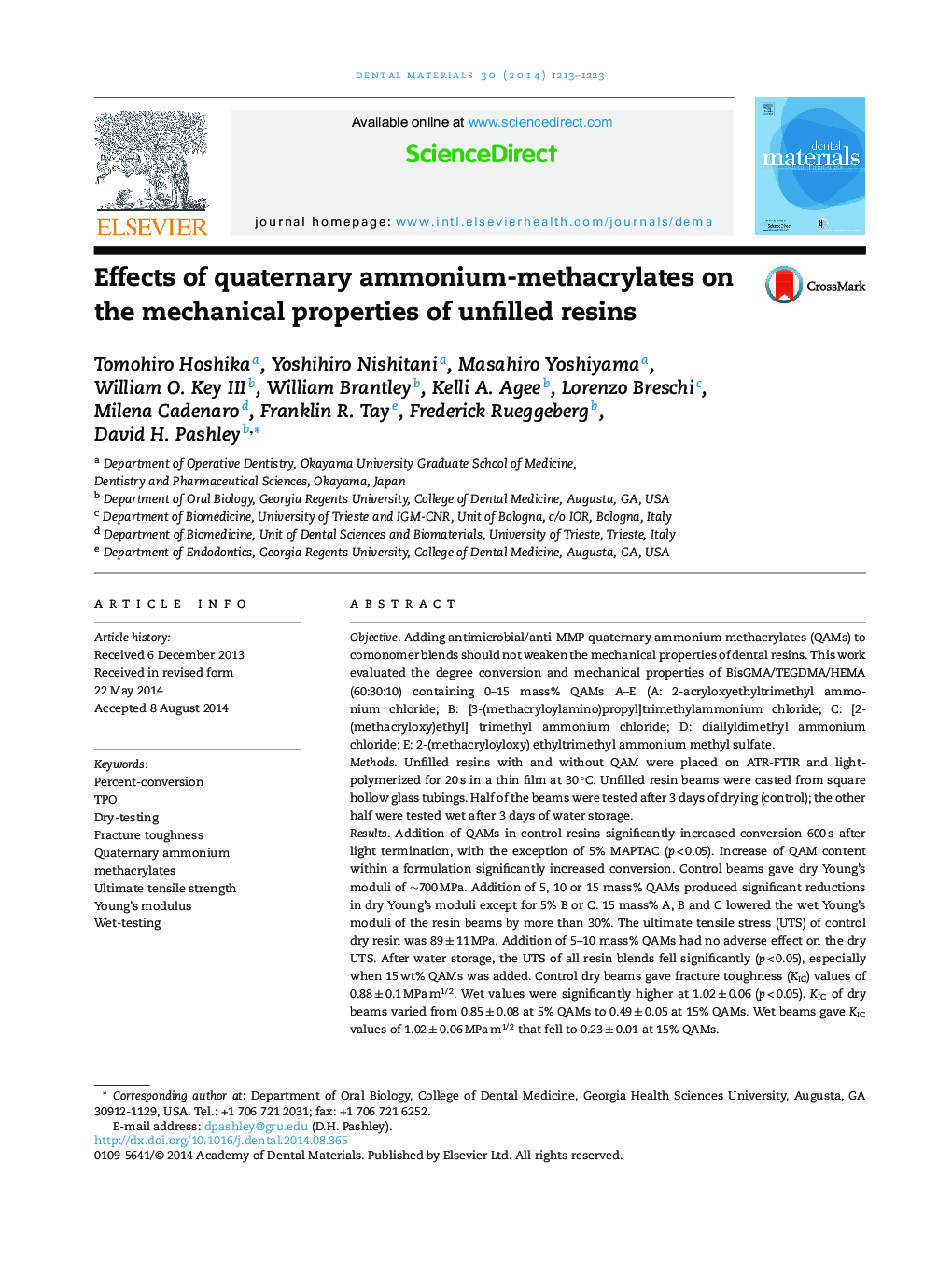| Article ID | Journal | Published Year | Pages | File Type |
|---|---|---|---|---|
| 1420839 | Dental Materials | 2014 | 11 Pages |
ObjectiveAdding antimicrobial/anti-MMP quaternary ammonium methacrylates (QAMs) to comonomer blends should not weaken the mechanical properties of dental resins. This work evaluated the degree conversion and mechanical properties of BisGMA/TEGDMA/HEMA (60:30:10) containing 0–15 mass% QAMs A–E (A: 2-acryloxyethyltrimethyl ammonium chloride; B: [3-(methacryloylamino)propyl]trimethylammonium chloride; C: [2-(methacryloxy)ethyl] trimethyl ammonium chloride; D: diallyldimethyl ammonium chloride; E: 2-(methacryloyloxy) ethyltrimethyl ammonium methyl sulfate.MethodsUnfilled resins with and without QAM were placed on ATR-FTIR and light-polymerized for 20 s in a thin film at 30 °C. Unfilled resin beams were casted from square hollow glass tubings. Half of the beams were tested after 3 days of drying (control); the other half were tested wet after 3 days of water storage.ResultsAddition of QAMs in control resins significantly increased conversion 600 s after light termination, with the exception of 5% MAPTAC (p < 0.05). Increase of QAM content within a formulation significantly increased conversion. Control beams gave dry Young's moduli of ∼700 MPa. Addition of 5, 10 or 15 mass% QAMs produced significant reductions in dry Young's moduli except for 5% B or C. 15 mass% A, B and C lowered the wet Young's moduli of the resin beams by more than 30%. The ultimate tensile stress (UTS) of control dry resin was 89 ± 11 MPa. Addition of 5–10 mass% QAMs had no adverse effect on the dry UTS. After water storage, the UTS of all resin blends fell significantly (p < 0.05), especially when 15 wt% QAMs was added. Control dry beams gave fracture toughness (KIC) values of 0.88 ± 0.1 MPa m1/2. Wet values were significantly higher at 1.02 ± 0.06 (p < 0.05). KIC of dry beams varied from 0.85 ± 0.08 at 5% QAMs to 0.49 ± 0.05 at 15% QAMs. Wet beams gave KIC values of 1.02 ± 0.06 MPa m1/2 that fell to 0.23 ± 0.01 at 15% QAMs.SignificanceAddition of 10% QAMs increased the degree of conversion of unfilled resins, but lowered wet toughness and UTS; addition of 15% QAMs lowered the mechanical properties of wet resins below acceptable levels.
